Search Results
Fine Jewelry University Articles matching: “10kt gold rope n”
Showing only FJU Article results. Click here to show all results.
Fine Jewelry University (Show All FJU Articles)
-
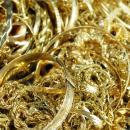
Gold Purity and The Differences Between White and Yellow Gold
Gold, just the word brings to mind value, rarity, wealth, beauty and jewelry. But what is gold? Yes the scientists tell … is a rare yellow mineral that is the most malleable and pliable of all metals. Yes, but what does that mean to me? Gold is a beautiful metal that is used to make timeless jewelry. Gold can be bent and molded into elegant engagement rings… to another. Gold is an expression of love. Gold Purity Is all gold the same? We hear a piece of jewelry is pure gold or solid gold or 24 karat gold, but what does it all mean? Gold used in jewelry like wedding rings can come in many …
-
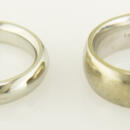
The Difference Between White Gold and Platinum
The first difference between white gold and platinum is the most basic and is the foundation of all the other differences. White gold and platinum are … gold starts out as gold. Gold is yellow. Platinum is itself a white metal. White gold and platinum have their own properties that make them unique. How is white gold made? White gold is an alloy of gold and some white metals such as …. The white color is achieved by a careful choice of the alloying metals, which bleach the deep yellow of pure gold. The amount of alloy mixed with gold is called its karat. The key to understanding gold karat is the karat value over 24. …
-
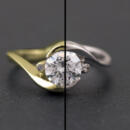
Star White Gold
How white is your white gold? Style, fashion, and beauty are all reasons to choose white gold. White gold compliments diamonds. White gold is …, not all gas is created equally. We have all had the experience of poor performance due to poorly made gas. White gold also has three grades. Grade 3 is off white, grade 2 is standard, and grade 1 is premium. This means that when white … with a white metal called rhodium. Rhodium is a metal very similar to platinum and rhodium shares many of the properties of platinum including its white color. The rhodium plating is used to make the white gold look whiter. The natural …
-
Measuring Gold Weight
The old riddle goes: what weighs more a pound of feathers or a pound of gold? Some say gold because it is heavier. Others say they are both a pound so they weigh the same. Both are wrong. How …Tradition. Gold is not weighed in the ordinary weights. Gold is weighed in the troy measurement system. One ounce of gold is not the same as the ordinary ounce (really called avoirdupois ounce). The best way to understand this is to …. An avoirdupois ounce converts to 28.34 grams approximately. The troy ounce is 31.1 approximately. You say, “Aha! Gold weigh more, so a pound of gold weighs more than a pound of feathers.” Unfortunately there is one more piece of the …
-
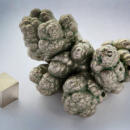
What to Do When Your Ring Irritates Your Skin
… or green when they wear certain jewelry. One of the most common metal allergies is Nickel which is added to pure gold in many white gold alloys. The Nickel is what makes the gold white, but it can also cause an allergic reaction. Some … the exact cause and solution of an allergic reaction is not as simple as it may seem. Jewelry, especially white gold, is often plated to give it a brighter finish. White gold alloys are often plated with Rhodium which is a member of the …
-

How to Tell If a Diamond Is Natural or Lab Grown
… is easy to identify them because they aren’t diamonds. But, with lab grown diamonds, the chemical structure and properties are all the same as natural diamond, so it becomes much more difficult to differentiate them. Responsible …How can I know if my diamond is real? This is a question we get all the time, and it’s not as simple as you might think. … to decide what “real” means. If you are not familiar with lab grown diamonds, you might want to check out our introduction to lab grown and synthetic diamonds before continuing with this article. So, now you know that lab grown …
-
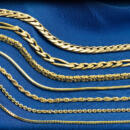
Types of Necklace Chains
… use of metal. So, you can have a big chain look without a big chain price. This is a very nice feature to have when gold prices are high. The only downside is that this style isn‘t quite as strong as a traditional cable chain of the same…an unfortunately tendency to pull hair. They can also become twisted which detracts from their clean, straight look. Rope Chain Few other chain styles are as famous and well known and the rope chain. These chains are comprised of many …
-
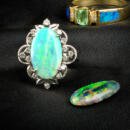
Gem in the Spotlight: Opal
… of hope and purity, associating it with positive virtues. Opal was even thought to possess protective and healing properties, guarding against disease and enhancing one’s eyesight. Pliny, a prominent Roman scholar in the first century AD… stones, setting them in a pendant or earrings instead of a ring will help them last as long as possible. With proper care opals can last for generations. Opals have very high water content, typically hovering around the 5-10% mark. As …
-
Synthetic Gems: The Whole Story
… is sometimes the first clue it is a synthetic. Synthetic gems make excellent jewelry because they have the same property as the natural gem. Synthetic gems make owning beautiful jewelry affordable. But synthetic gems are not natural; …Ruby, sapphire, emerald and alexandrite are very beautiful gems and very rare in their stunning beauty. These four gems have been coveted by …the rich for thousands of years. But, what if anyone could own them? At gem shows and museums, I have seen jaw dropping rubies, sapphires and emeralds. These gems in high quality have put ownership beyond most people to justify the …